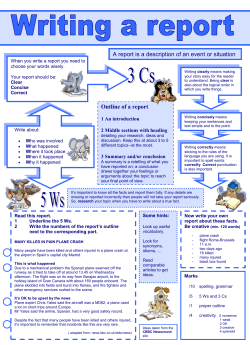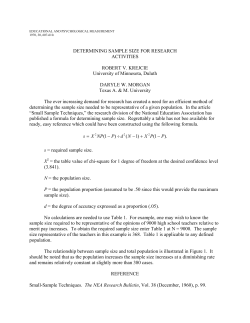
ELEMENTS OF DESIGN: POINT LINE SHAPE
THE FORMAL ELEMENTS OF DESIGN: POINT LINE SHAPE Plane SPACE PATTERN Texture VALUE Form/ Mass COLOR THE FORMAL PRINCIPLES OF DESIGN: HARMONY Unity & Variety BALANCE Symmetry / Asymmetry (Formal) (Informal) PROPORTION (Governs the Whole) Part to Whole – Scale or Size Dominance & Subordination Gradation REPETITION RHYTHM / MOVEMENT EMPHASIS / FOCAL POINT 1991, revised 2001 Linda Allen-Kodama h e ELEMENTS and PRINCIPLES of art are used in the formal analysis of both two and three-dimensional works. These following definitions are geared toward the understanding of two-dimensional works of art and are part of the discussion of COMPOSITION In relationship to a PICTURE PLANE. In their visual form they are the parts of any work of art or design. J m W- the irreducable component parts necessaiy to create any work of art or object. POINT: The simplest of elements. Point is the most brief visual statement that can be made, it is static (except when used in sequence). Point attracts the eye. It can be a pause, or moment of silence. LINE: A thin threadlike mark indicating the path of a point moving In space. It has a beginning and a point of termination. It has length and can vary in width, but its length far exceeds its width proportionally. Line has position (location), direction (It often points) and many time has movement, It can be: straight convoluted bent even in width curved thick and thin zig-zagged dark and light Lines define the boundaries of shape. Lines can be used for: construction contour or cross contour gesture Line can express emotion Lines do not exist in nature - we invent them to understand, clarify and define edges and to initiate linear-like" things such as grasses and twigs from a distance. SHAPE / PLANE: Two-dimensional quality of form. They have height and width but not depth, Is the two-dimensional interpretation of form or mass Planes are flat and level and act to define three dimensional space. Have position In space Sometimes created by a configuration (see GESTALT) L€uer Expanse wlthln which all things are contained The distance, Interval or area between elements in the picture plane. It can be POSITIVE or NEGATE space, lhe Illusion of actual threedlmensional space. SPACE: PAlTERN / TEXTURE: TEXTURE Tt-n? representation of or the actual qmllty of surface, Learough, smooth, hard, soft, etc., resulting from minute variations In surface PAlTERN Can be the graphlc representatlonai llluslon of actual textures created by shapes & values etc. Sequmclng / Interval A repeated mom or mtifs More abstractly: the colors, values, llnes, texture - regular or Irregular - that form a configuration In a compositicn VALUE / FORM / W S : VALUE The ACHROMATIC scale (without color) from while thru gray to black In 9 - 12 steps. In color value h tramlated to the concept of TONE whlch Is created with CHROMATIC grays created by the combination of comptementary colors, or achromatic grays added to any HUE. Describes form through transitloris of a variety of grays created , a llght source focused on an object (CHIAROSCUW) Helps create the illusion of depth Gthin the PICTURE PLANE ATMOSPHERIC PERSPECTIVE. * Helm describe MAS (VISUAL WEIGHTI and FORM (the three-cilmen- FORM T h e three-dimensional interpretdon of shape. MAS COLOR: The Illusion of solid substance or bulk - saturated visual welght. * The propwHes of whlte light (sunlight) Ihat artists portray with pigments. A term for f i e comHned qualkles of HUE, VALUE and INTENSITY. HUE - the specific designated podtion of a section of the w t r u m . The first propeftyof colo~It dmply refers to the ram of one of the twelve (1 2) speciflc color groups on the conceptual color whm (lared, red-orawe, orange, yellow-orange etc.) to which the color belongs . The pure state of the coloc unmked and unmo fled. It has an exact measurable @Ion In the elech-mgne spechum. See hand-out on COLOR for more deflnltlons pertalnlng to colo -.- - organize the elements and thrwgh them structure the compostion HARMONY: A combination of parts into a proportionate or orderly whole; congruity, agreement. It is an explaination of how the physical properties (elements & principles) of a work of art create visual harmony and then support what might be content harmony Unity with variety, variety with unity * Balance BALANCE: In a composition a visually favorable distribution of ELEMENTS on either side of a central axis (or FULCRUM) gives the impression of visual equllibrium within the PICTURE PLANE indirect relation to gravity and physlcal mass, The FORMAL ELEMENTS as well as associative and psychotogical factors play a role In this visual balance. There are two different types of balance, SYMMETRY and ASYMMETRY. SYMMETRY: Formal In balance, with elements of equal or near-equal weight on either side of a real or Implied central fulcrum. ASYMMETRY: Informal In balance. Elements not the same on either side of the central axis, but not necessarily out of balance. The visual point of gravitational balance may not be located on the imaginary central axis of the PICTURE PLANE. REPETITION: Repetition is multiple occurrence. It acts as a fundamental unifying factor In works of art. Any of the FORMAL ELEMENTS may be repeated in a work of art (see GESTALT), Repetition may be obvious, with clearly discernible patterns and rhythm or may be employed by subtle means as well, in some cases remaining static, Repetition is not always pattern. RHYTHM / MOVEMENT: * Rhythm is repetition, In vlsual art, rhythm results from the perception of intervals between repeated elements, Images, motifs or gestures, * Rhythm may be described as: regular alternating flowing syncopated (shifted accents) progressive any combination of these Both REPETITION and RHYTHM create a form of movement in the PICTURE PLANE. 2 EMPHASIS / FOCAL POINT: The perceived -us of Interest (CENTER OF iNTERESn; the yi&d center of the Image, It may be a specific ELEMENT or a central figure / IMAGE, or It may be In a general area. The principle of emphasis has to do with the quality of subordinating certain elements to others, This creates centers of interest In t he cnm position where certain forms, shapes, lines, textures, etc, lead us toward those which become the main features of the composltior.. By emphasis the artist makes certain elements dominate over others, creating a sense of order rather than chaos, a sense of variety rather than monotony. Emphasis can be achieved by making certain elements important due to their placement in the compostlon; or by contrasting elements through texture, color, size and shape relationships. PROPORTION: The comparative relation between parts In respect to one another in size, amount, similarity difference (etc,) and to the whole; ratio. Having to do with the harmonious relationship between the parts as they make up the whole or totality of a work of art. Proportion refers not to absolute size or amount, but to the comparison of dimensions, The principle of proportion has to do with size relationships. Elements of all the same size create a sense of monotony. Elements of different sizes, though some are repeated to retain a sense of continuity, create asense of variety of Interest. Proportion not only aids logic but also interest In a work of art, * PROPORTION is the size relationship of the parts to the whole or part to Part, SCALE Is the size relation of something to Its surrounding or environment. 11ZE: comparison to an absolute measurement Proportional gradations of: shape size direction orientation (spatial Illuslon) value Dominance and subordination I BIBLIOGRAPHY 1. Atkins, Robert, Art Speak, A Gilldo to Contemporary Ideas, Movements and Buzzwords, New York. Abbeville Press Publishers, 0 1990. 2. Stock, Jonathan and G i e Atterberry, Design Essenffals, A Handbook, New Jersey, Prentice Hall. 0 1989. 3. B s p , Margy Lee,North Uahf Dictionary ofArt Terms, Cincinnati, Ohio, North Light Publishers. 0 1984. 4. Lucb-Smlth. Edward The Thamw and Hudson Dicfionory of Art T m , London. Thames and Hudson, Ltd., 0 1984. Ownbey, Ronald, Professor Emeritus of Art, Mt.San Antonio College. Robinson, Leo, Professor Emeritus of Art, California State U&ar~+v Fullarton.
© Copyright 2025





















